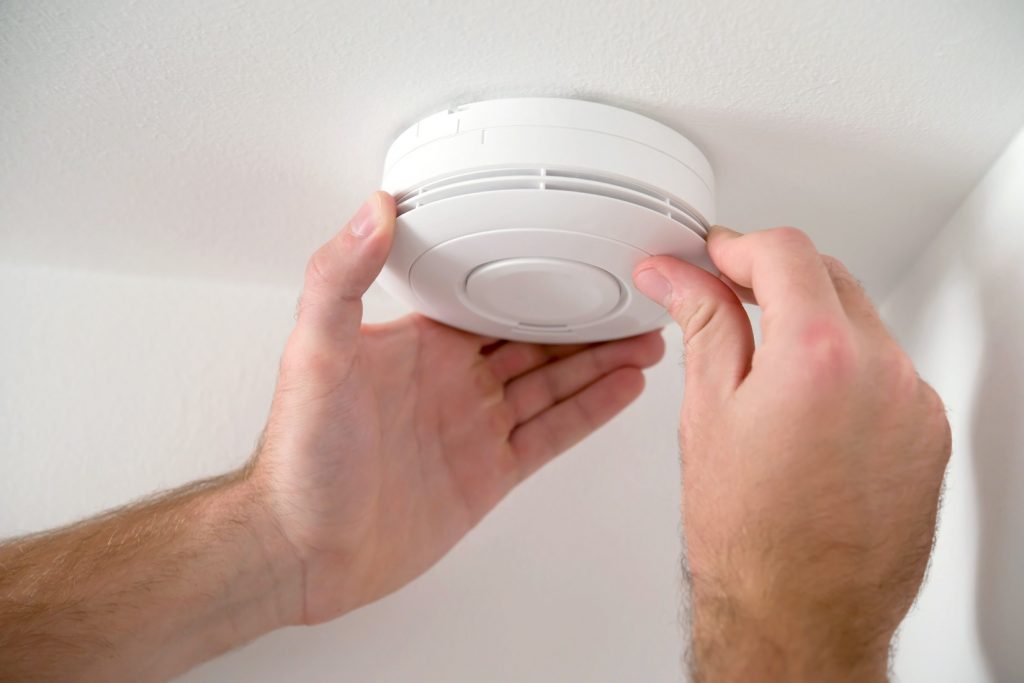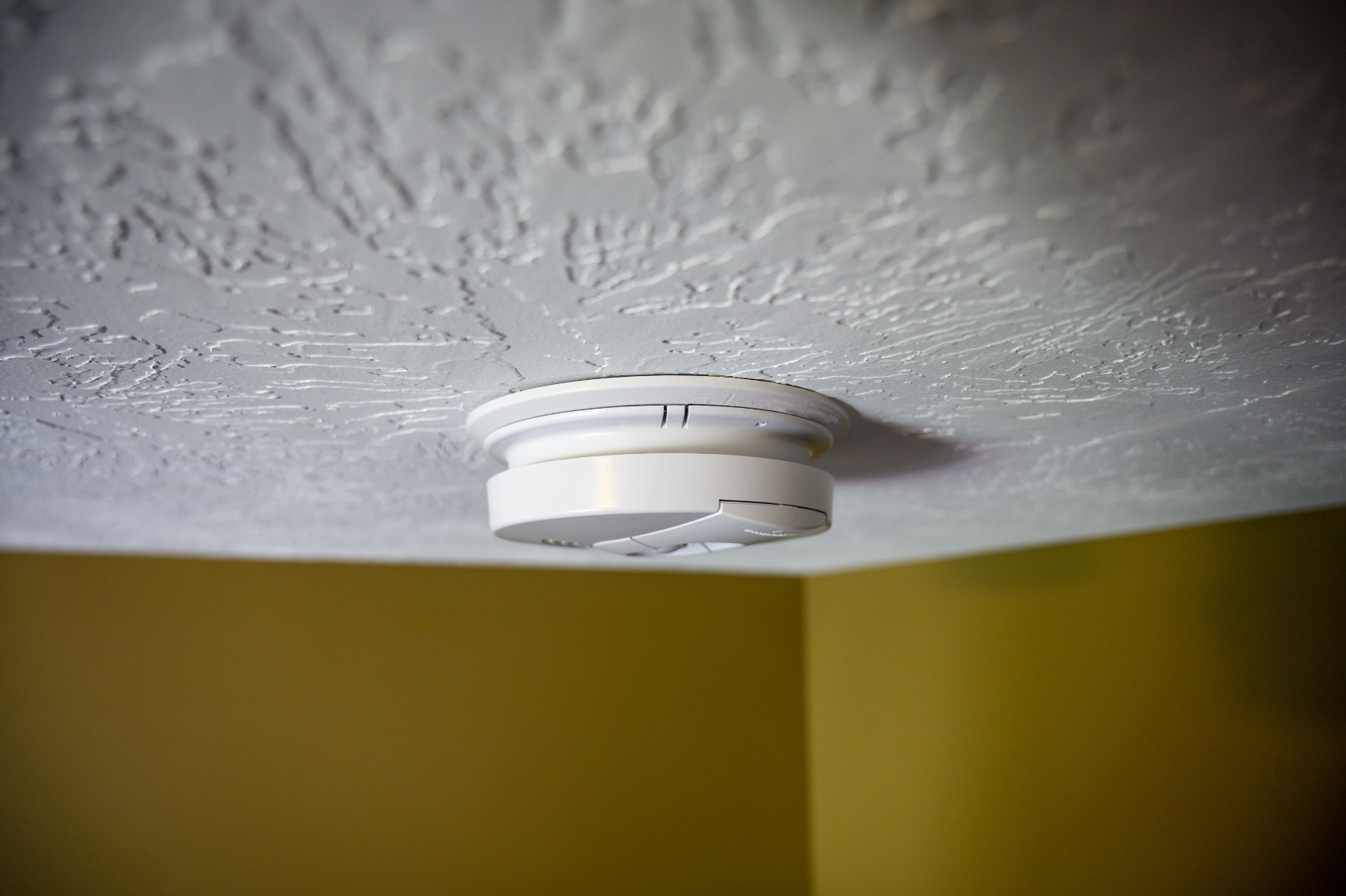Where to Install Smoke Detectors
House fires and other disasters are rarely considered until they happen. Prepare well. In most regions, residential smoke detectors are required by law and can improve fire safety. Where should you install smoke detectors to protect your home and family?
National Fire Protection Association: 2,620 deaths per year from residential fires.
1. About 60% of those deaths are in homes without smoke/fire alarms, so the lesson is clear.
2. Using and maintaining smoke alarms properly can prevent a family tragedy.
Basics of Alarms
There are four different kinds of smoke and fire alarms used in homes. Some detect heat and fire, some smoke, and some both.
Thermocouples
The first residential fire alarms were heat detectors. They have a temperature-detecting component that triggers an alarm when reached. Heat detectors are sufficient in small, confined spaces or where speed isn’t critical.
Heat detectors have fewer false alarms but detect fires more slowly. Many home fires are started by smoke.
Detectors
Smoke detectors detect fires faster than heat detectors. Three types of smoke alarms use different technologies to catch a fire:
Ionization smoke alarms emit ions that generate a faint electrical current between electrodes. The alarm sounds when smoke enters the internal chamber. This alarm is for fast, fierce fires.
Smoke alarms with photoelectric sensors use a light source. When smoke enters the optical chamber and blocks the morning, the scattered light triggers an alarm. This alarm detects slow, smoldering fires.
Combination smoke alarms are ionization and photoelectric. For best protection, the NFPA recommends dual-technology smoke alarms.
Electricity
Alarms can be hardwired or powered by batteries. Hardwired smoke alarms have an internal battery backup system that keeps them working if the power goes out.
Due to their low cost and ease of installation, battery-operated smoke alarms only provide reliable protection if the batteries are regularly checked and replaced.
Missing, disconnected, or dead batteries account for 75% of malfunctioning smoke alarms. Building codes in many areas now require hardwired, interconnected smoke alarms so that if one alarm detects smoke, they all sound. These alarms use a 120-volt household current and a 10-year internal battery.
Smoke detectors work how?
Before discussing where to place fire alarms, it’s essential to understand how they reduce fire damage and injuries. Photoelectric, ionization and dual smoke alarms exist.
A photoelectric detector detects light. It best catches smoky fires. Meanwhile, an ionization detector detects when ionized smoke particles are neutralized. An electrical current drop triggers the alarm. Comparatively, ionization detectors detect flaming fires better. Dual-sensor smoke detectors have both.
Where to Install Smoke Detectors
Positioning

Local building codes may dictate the placement of smoke alarms, but the NFPA also offers recommendations. Many local regulations are based on these recommendations.
Install smoke detectors in each room, outside sleeping areas, and every floor, including the basement.
On levels without bedrooms, place alarms in the living room, near the stairway, or both.
Install basement smoke alarms at the top of the stairs.
Install smoke alarms at least 3 meters from cooking appliances to reduce false alarms.
Smoke alarms should be mounted high (remember, smoke rises). Install wall-mounted alarms 12 inches from the ceiling (to the top of the notice).
Position the alarm within three feet of the peak but not at the height (four inches down from the mountain).
Install smoke alarms away from drafty windows, doors, and ducts.
Paint smoke detectors. Paint, stickers, and other decorations can disable alarms.
Interconnect all smoke alarms for maximum protection. One smoke alarm triggers the others. Hardwired or wireless connections are possible.
Interconnected smoke alarms must be from the same manufacturer. Incompatible alarms may not sound.
Many experts recommend installing smoke alarms high on the ceiling or walls.
You can ensure early detection by placing smoke detectors 12 inches below the ceiling.
Every floor needs a smoke detector. Garages are familiar fire sources, so install one. Also, remember basements, sunrooms, pool or spa areas, furnace rooms, laundry rooms, and other utility spaces.
In new construction, hardwired, interconnected smoke detectors are often required. Even where building codes allow battery-operated detectors, a hardwired system is preferable. Replace battery-powered sensors twice a year. Change the batteries when DST ends and EST begins.
To ensure proper installation of your smoke detectors and integrated low voltage systems, contact Southwest Integrated Solutions today!


